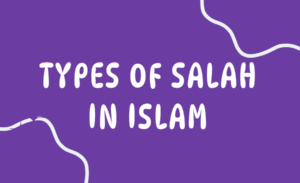Eid is a time of joy, gratitude, and communal unity for Muslims around the world. The two main Islamic festivals, Eid ul-Fitr and Eid ul-Adha, are marked by special congregational prayers. While they share similarities in spirit and structure, the prayers performed on these days differ in several aspects. Understanding these differences can enhance the spiritual experience and broaden cultural awareness. This guide provides an in-depth comparison of the Eid ul-Fitr and Eid ul-Adha prayers, catering to a global audience.
1. Overview of Eid ul-Fitr and Eid ul-Adha
Eid ul-Fitr (Festival of Breaking the Fast): Celebrated at the end of Ramadan, the Islamic holy month of fasting. It falls on the first day of Shawwal, the tenth month of the Islamic lunar calendar.
Eid ul-Adha (Festival of Sacrifice): Commemorates Prophet Ibrahim’s (Abraham’s) willingness to sacrifice his son as an act of obedience to God. It coincides with the Hajj pilgrimage and is observed on the 10th of Dhul-Hijjah, the twelfth month of the Islamic calendar.
2. Timing of the Prayers
Eid ul-Fitr Prayer Timing: The prayer is offered shortly after sunrise. It is recommended to delay the Eid al-Fitr prayer slightly to allow time for the distribution of Zakat al-Fitr, the obligatory charity.
Eid ul-Adha Prayer Timing: This prayer is generally performed earlier, soon after the sun has risen and reached a certain height. This early timing allows more time for the subsequent sacrifice (Qurbani) to be conducted.
3. Location and Congregation
Both prayers are performed in large congregations, ideally in open fields known as Eidgahs or in mosques if the weather does not permit outdoor gatherings. These gatherings symbolize the unity and collective spirit of the Muslim Ummah (community).
4. Structure of the Prayers
The structure of both Eid prayers is quite similar:
- Two Rak’ahs (units of prayer)
- Extra Takbirs (saying “Allahu Akbar”) are included
However, the number and placement of Takbirs differ:
Eid ul-Fitr: Typically includes six additional Takbirs, three in the first Rak’ah after the opening Takbir, and three in the second Rak’ah before the Ruku (bowing).
Eid ul-Adha: Includes seven additional Takbirs in the first Rak’ah and five in the second Rak’ah, though slight variations exist depending on local jurisprudence and schools of thought.
5. Sermon (Khutbah) Differences
The Khutbah follows the prayer in both Eids but is not obligatory.
Eid ul-Fitr: The sermon focuses on the significance of Ramadan, fasting, charity, and communal harmony.
Eid ul-Adha: The sermon highlights the story of Ibrahim, the values of sacrifice, and the importance of Hajj.
6. Zakat and Qurbani Obligations
Eid ul-Fitr: Muslims are required to give Zakat al-Fitr before the Eid prayer to help the needy partake in the celebrations.
Eid ul-Adha: The act of Qurbani (animal sacrifice) is performed after the Eid prayer by those who can afford it. The meat is distributed among family, friends, and the less fortunate.
7. Global Practices and Cultural Variations
While the core rituals remain consistent, cultural expressions of Eid can vary:
- In South Asia, Eid prayers are followed by community feasts and family visits.
- In the Middle East, the focus may be more on formal attire and attending the mosque with extended family.
- In Western countries, many Muslims take time off work and school to celebrate and may adapt the schedule of prayers based on local conditions.
While the core rituals remain consistent, cultural expressions of Eid can vary:
- Africa: Unique rhythms of drumming, dancing, and community storytelling accompany the Eid celebrations.
- Southeast Asia: Traditional dishes like ketupat (Indonesia) and rendang are prepared in honor of the occasion.
- Central Asia: Celebrations are closely tied with nomadic traditions, and prayers are often followed by communal games and festive gatherings.
8. Spiritual Symbolism Behind the Eid Prayers
Eid al-Fitr Prayer: Symbolizes gratitude to Allah for the strength to complete the fast and spiritual reflection during Ramadan.
Eid al-Adha Prayer: Reflects submission to God’s will and reinforces the spirit of sacrifice, obedience, and compassion.
These prayers act as a reset and renewal of faith, embodying the values of devotion, discipline, and community that Islam upholds.
9. Differences in Intent (Niyyah)
Though not vocalized aloud, the internal intention (niyyah) of each Eid prayer also varies:
Eid ul-Fitr: Intention to offer the Eid prayer marking the end of fasting in Ramadan.
Eid ul-Adha: Intention to offer the Eid prayer that coincides with the time of sacrifice in remembrance of Prophet Ibrahim’s obedience.
Having a clear intention emphasizes mindfulness and spiritual purpose in prayer.
10. Sunnah Practices Before and After Eid Prayers
Eid al-Fitr: It is Sunnah to eat something sweet, like dates, before leaving for the prayer. Performing Ghusl (ritual bath), wearing the best clean clothes, applying perfume, and using different routes to and from the prayer are all encouraged.
Eid al-Adha: It is Sunnah to delay eating until after the sacrifice. Similar emphasis on Ghusl, clean clothes, and cheerful demeanor applies. These practices foster personal hygiene, joy, and readiness for communal worship.
11. Common Misconceptions
Eid prayers are not the same as Friday Jumu’ah prayers. They have different structures and significance.
Attending the sermon is highly recommended, though not compulsory like in Jumu’ah.
Missing the prayer does not invalidate the Eid celebration, but it is a missed opportunity for spiritual reward.
Wrapping Up: What Makes Each Eid Prayer Unique
Understanding the nuanced differences between Eid ul-Fitr and Eid ul-Adha prayers allows Muslims and non-Muslims alike to appreciate the richness of Islamic traditions. Both prayers encapsulate the essence of worship, community, and gratitude. Whether you’re observing Eid for the first time or seeking deeper knowledge, this guide aims to provide a clear and comprehensive overview.
FAQs:
Can women attend Eid prayers?
Yes, women are encouraged to attend Eid prayers, though cultural practices may vary.
Is it mandatory to pray Eid in congregation?
It is highly recommended (Sunnah Mu’akkadah) but not obligatory.
Can Eid prayers be performed at home?
In exceptional circumstances (e.g., pandemics), scholars permit performing Eid prayers at home.
Are the extra Takbirs essential?
Yes, they are part of the Sunnah and should be included, though minor variations are accepted.
What should I wear to Eid prayers?
It is Sunnah to wear your best clean clothes, preferably new, for Eid.
Are the extra Takbirs essential?
Yes, they are part of the Sunnah and should be included, though minor variations are accepted.
Do children need to attend Eid prayers?
It is encouraged to bring children to Eid prayers to involve them in the spiritual and communal aspects of the festival.
How long does an Eid prayer typically last?
The prayer itself takes only a few minutes, followed by a short sermon. The entire event usually lasts around 30–45 minutes.






